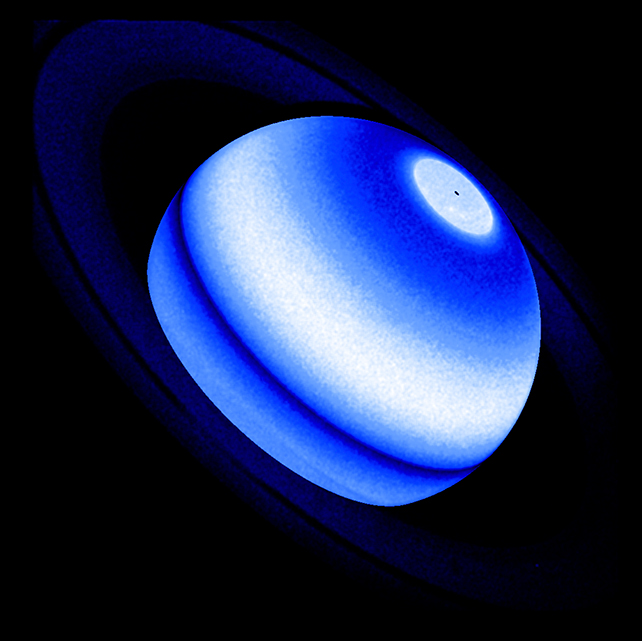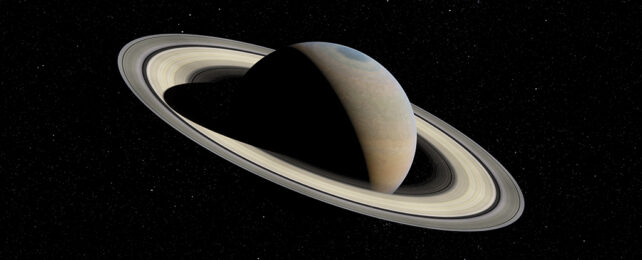Ever since we first noticed it in the mid-1970s, scientists have been puzzled by Saturn's Lyman-alpha (Lyα) bulge: a particularly bright bar of ultraviolet light emitted by hydrogen atoms during a particular type of electronic transition.
Now there's an explanation. A new study outlines how icy particle rain from Saturn's rings plays a role in heating the planet's upper atmosphere through further chemical reactions that we still don't fully understand.
According to NASA, it's the first time we've observed this phenomenon in the Solar System. The research team behind the study thinks the new information could be used to find other planets with rings similar to Saturn's.
"Everything is driven by ring particles cascading into the atmosphere at specific latitudes," says astronomer Lotfi Ben-Jaffel, from the Institute of Astrophysics in Paris, France. "They modify the upper atmosphere, changing the composition."
"And then you also have collisional processes with atmospheric gasses that are probably heating the atmosphere at a specific altitude."
We already know about ring rain, the way that the giant rings around Saturn are disintegrating into the planet itself; the rings could be entirely gone in as little as 100 million years, according to the experts.
What we didn't know about was the rain's interaction with hydrogen. Researchers studied ultraviolet light readings from the Voyager 1, Voyager 2, and Cassini spacecraft, as well as the International Ultraviolet Explorer and the Hubble Space Telescope, to get a consistent Lyα emission reading.

When some of these readings were initially taken, the UV light readings were dismissed as noise interference from the probes themselves. Now though, researchers have shown there is indeed a brighter strip of Lyα emission light in the planet's northern hemisphere.
"When everything was calibrated, we saw clearly that the spectra are consistent across all the missions," says Ben-Jaffel. "This was possible because we have the same reference point, from Hubble, on the rate of transfer of energy from the atmosphere as measured over decades."
"It was really a surprise for me. I just plotted the different light distribution data together, and then I realized, wow – it's the same."
Saturn's atmosphere is 75 percent hydrogen and 25 helium, with smaller traces of other substances and a lot of wind: up to 1,800 kilometers (1,118 miles) per hour at the equator. The temperature through the layers of the atmosphere ranges from around -130 °C (-202 °F) to about 80 °C (176 °F).
The data collected by the various spacecraft covers several years, enabling scientists to study the planet's multiple seasons and solar cycles. The nature and consistency of the ultraviolet light mean icy ring rain is the most likely explanation.
As the researchers point out, it's yet more evidence of the variations in exoplanets – Jupiter, for example, has a different type of Lyman-alpha (Lyα) bulge to Saturn.
This is all useful information as our telescopes get more powerful and can take in more of the Universe around us.
"We are just at the beginning of this ring characterization effect on the upper atmosphere of a planet," says Ben-Jaffel. "We eventually want to have a global approach that would yield a real signature about the atmospheres on distant worlds."
"One of the goals of this study is to see how we can apply it to planets orbiting other stars. Call it the search for 'exo-rings.'"
The research has been published in the Planetary Science Journal.
